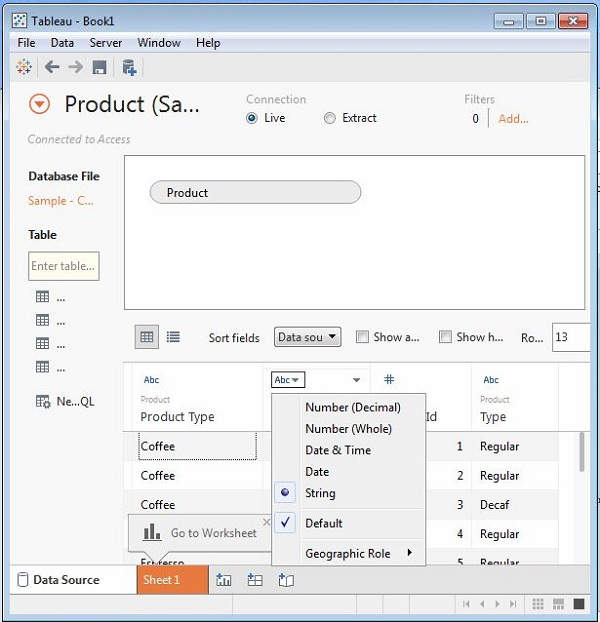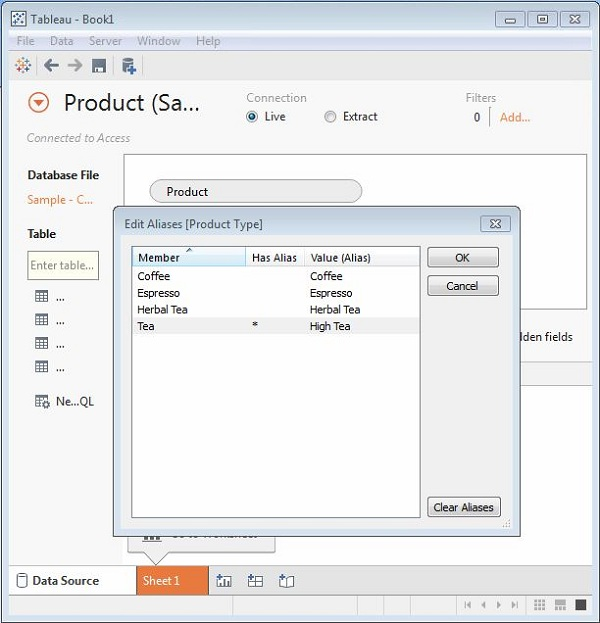Tableau edits metadata
May 26, 2021 Tableau
Table of contents
When connected to a data source, Tableau captures the source's metadata details, such as columns and their data types. /b10> This is used to create dimensions, measures, and calculated fields used by the view. /b11> We can browse metadata and change some properties of certain requirements for it.
Check the metadata
Once connected to the data source, Tableau displays all possible tables and columns that exist in the source, so let's consider the source sample coffee shop check metadata. /b10> Click the data menu, and then select Connect to the data source. /b11> Browse the MS access file named Sample - Coffee Shop. /b12> Drag a table named Product to the data canvas. /b13> When selecting a file, we get the following screen that shows the column name and its data type. /b14> String data types are displayed as Abc, and numeric data types are displayed as .

Change the data type
If necessary, we can change the data types of some fields. /b10> Depending on the nature of the source data, sometimes Tableau may not recognize the type of data in the source. /b11> In this case, we can manually edit the data type. /b12> The following screen display options.

Rename and hide
You can use the rename option to change the column name. /b10> In addition, we can hide a column so that it does not appear in the data view we created. /b11> You can get these options by clicking the data type icon in the metadata grid, as shown below.

Column alias
You can assign an alias to each column of a data source to help you better understand the nature of the columns. /b10> We can select the alias option from the steps above, and then the following screen appears for creating or editing the alias.
